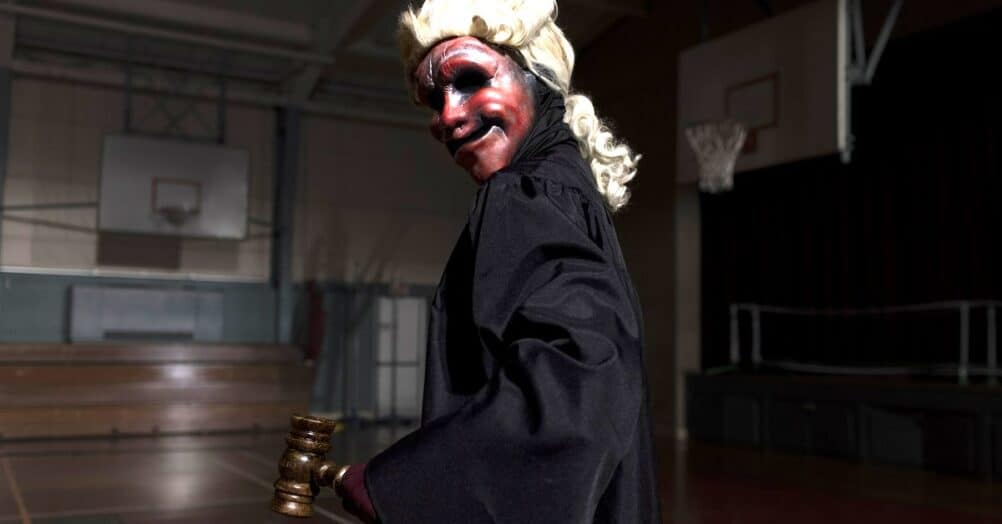Last Updated on July 31, 2021

PLOT: After being rear-ended by a suspicious stranger on a suburban New Mexican street, young Hillary Diaz (Makenzie Vega) is soon stalked and accosted in her home by the same murderous motorist.
REVIEW: It’s hard to imagine a 20 year lacuna between first and second feature films, but that’s precisely the case for writer/director Mark Pavia and his new Chiller Channel Original debuting June 3rd. Truly, the man who adapted Stephen King’s NIGHT FLIER in 1997 is now back with a stalk and slash effort with an automotive bent – FENDER BENDER – which, for all its escalating gore and its refreshingly non-pat ending, still amounts to little more than a painfully rote and ersatz amalgam of HALLOWEEN, DEATH PROOF and THE COLLECTOR. If you dug each of those flick, chances are you may enjoy this rather vapidly scripted, boilerplate, by the numbers TV movie, if only a modicum. However, if you plan to check in to scope what Chiller promises, an “Original”, you’re likely to be sorely disappointed by what transpires. For, as the title would suggest, FENDER BENDER only incurs light damage indeed!

In typical slasher fashion, the flick opens with a modus operandi for our sadistic slayer. A woman returning home after getting in a minor car accident soon receives a text message from the now not-so-stranger who rear-ended her earlier in the day. As a result of exchanging personal information, as you tend to do after an auto accident, the young woman opens herself up to an unforeseen vulnerability. Soon a Gimp-like, leather-bondage-clad madman is inside the woman’s house, wielding a large carving blade, with homicidal intent. Suffice it to say, the poor lass would have preferred a fiery four car pileup.
Returning from the title card we meet our New Mexican final girl, Hillary Diaz, who just turned 17 years old. Borrowing her mom’s new car for the day, she’s suddenly struck from behind by an untoward motorist. It happens on a wide, empty, suburban street no less. The man (Bill Sage) extends his courtesy, but we sense he’s a first-rate creeper the instant he steps out of his suped-up muscle car, a la Stuntman Mike in DEATHPROOF. He perfunctorily exchanges info with Hillary, and the two go their separate ways.
Back at home, Hillary’s folks don’t think too kindly of the accident, despite it being the man’s fault. This leads to Hillary being left home alone as their parents go away to visit the theater and a casino. You know what happens next. The driver contacts Hillary via text, spooking her a bit, then seemingly severs all ties. That’s not all he severs, unfortunately, as Hillary’s pals Erik (Kelsey Leos Montoya) and Rachel (Dre Davis). After trading some stilted teenage dialogue, it soon becomes clear the murderous motorist is wreaking havoc on the Diaz homestead, and it’s up to the three youngsters to survive an ultra-violent home invasion. Can you guess who does and doesn’t?

Actually, you may not. One of the undoubted strengths of the film is that it avoids a pat Hollywood ending, even for a horror film, and makes no attempt toward redemption whatsoever. It’s what resonates most. Without divulging much more than that, the movie seems to be making a claim, however overt or covert, that it’s unwise to give out your personal information after even an innocuous car crash, and that if you do, you’re responsible for what could potentially happen. Agree or disagree, the MO of the killer is flat out asinine. Is crashing your car into listless young drivers the only way to obtain a home address, a phone number and the like? Wouldn’t, at some point, the police or insurance companies come into play? I know a negligible amount of damage can go unreported, but come on, at least one police report would be filed if you serially crashed your vehicle into others.
To wit, the setup has such a rank whiff of what Tarantino revved up in DEATH PROOF that it’s hard to construe this as anything remotely original. No, it’s quite doltishly derivative in that regard, all the way down to the additional HALLOWEEN-like slasher tropes and THE COLLECTOR-style fatigues. The only thing that atones for this sort of over-trampled territory is the escalating gore in the film. Bloodless is how the first few slayings are depicted, yet wisely, they grow gnarlier and more graphic as the film unspools. This surely has a lot to do with the strictures of television, but at least the movie builds toward an eruption of violence in the end that wasn’t quite delivered early on. That, and the passable execution of such, make the movie a bit better than perhaps it should be.

The problem then becomes, who possibly cares about the potential deaths of such shallow, two-dimensional characters? With most of the movie taking place over the course of a single night, there isn’t close to enough time to sit, live with, breathe alongside of and get a sympathetic sense of anyone in the film, Hillary included. Worse yet, there’s a drunk ex-boyfriend who shows up on the doorstep demanding to be talked to, and he’s so grating and unlikeable you actually want the guy to die…gruesomely. This kind of apathy tends to sap the more sturdy facets of the film, namely the slick pacing and aptly shot visual template. There’s a digestible breeze about the film that keeps it entertaining throughout, it’s just that the stakes involved are never convincingly conveyed, nor is the premise remotely original enough to really leave an unfixable mark on the mind after walking away. So, even despite a few merits, in the end, this is one FENDER BENDER that hardly leaves a dent.





















Follow the JOBLO MOVIE NETWORK
Follow us on YOUTUBE
Follow ARROW IN THE HEAD
Follow AITH on YOUTUBE